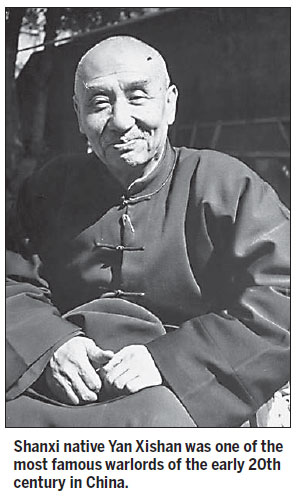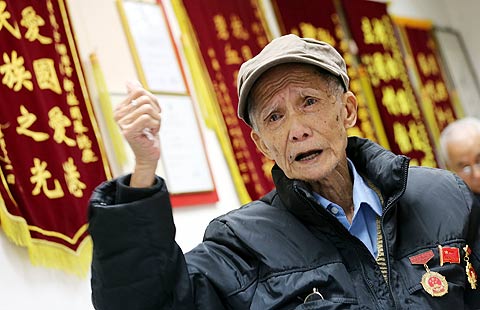'Reactionary' was highly effective governor
Updated: 2014-05-31 07:51
By Li Yang (China Daily)
|
|||||||||||
I learned about Yan Xishan for the first time in a Chinese-language textbook in primary school in the early 1990s. The "reactionary" and his soldiers killed a young unyielding revolutionary hero Liu Hulan with a woodchopper, in front of hundreds of villagers.
The second time I read about Yan was in my college library in 2000. I then realized that a cruel reactionary could also have other sides.
More books on Yan and written by him have been published recently. I now have more sources of information to learn more about him as a person.
Yan is now recognized as one of the most noteworthy warlords active from the 1910s to 1940s, not for his military achievement, but for his governance and thoughts.
The son of a wealthy banker family who grew up in a landed gentry environment in Shanxi, Yan strongly believed in mercantilism, physiocracy and Confucianism.
His education in Japan's Imperial Military Academy and contact with doctors from the West in 1918 as they helped him to control and treat an epidemic in Shanxi broadened his horizons and consolidated his determination to modernize the backward agricultural province, both industrially and socially.

Inspired by the former Soviet Union's five-year plan development model, he made a 10-year plan to develop Shanxi from the 1930s to 1940s, during which it achieved remarkable economic growth.
He implemented four-year free compulsory education in Shanxi from the 1920s, the earliest in China, established industries around Shanxi's rich coal resources, and built one of the most developed railway systems in China at that time.
Unlike other warlords, Yan paid more attention to developing his hometown than to waging war, and sought a balance among different powers throughout the nearly 40 years he ruled Shanxi.
He was both friend and foe to the Communist Party of China, the Kuomintang, and even the Japanese invaders in the War of Resistance against Japanese Aggression (1937-45).
"I am dancing on three eggs. I cannot afford to break any one of them," he wrote in his diary.
He also sought a middle way in governance. Criticizing capitalism's snobbishness and communism's idealism, Yan proposed to draw lessons from both roads and develop Shanxi along the middle path, according to its practical situation.
Yan lived a simple life in Taiwan after 1949 and died of disease in 1960 at the age of 77. His Shangxi hometown fellows who went to Taiwan with him took care of his residence there and now care for his tomb.
Interestingly, local villagers in Dingxiang today, old and young, still regard Yan as the most prominent provincial governor in Shanxi.
Yan's 40-year reign saw Shanxi's fast rise from being one of the poorest provinces in China to becoming a place renowned for its affluence, education and unity.
Researchers of Yan believe his thoughts and successful governance in Shanxi offer practical models for modern-day China.
(China Daily 05/31/2014 page10)
Today's Top News
MH370 passengers' relatives angry at search
European firms' 'best era' may be over in China
Russia troops 'leave' Ukraine border
Everest climber denies accusations
A small person's big identity question
Rebels down Ukrainian military helicopter
Russia bans 'historically false' WWII movie
Egypt extends presidential vote
Hot Topics
Lunar probe , China growth forecasts, Emission rules get tougher, China seen through 'colored lens', International board,
Editor's Picks

|

|

|

|

|

|





